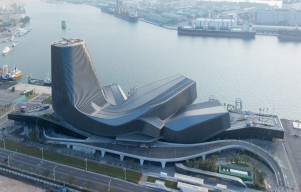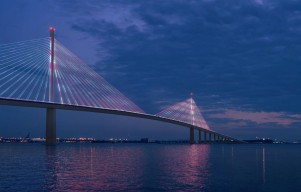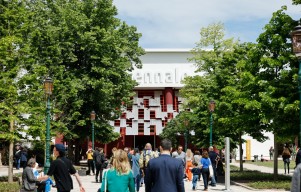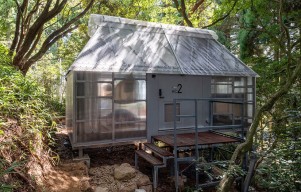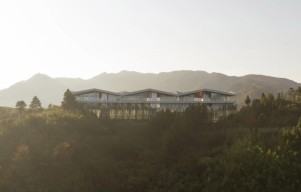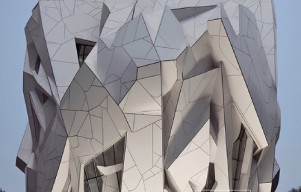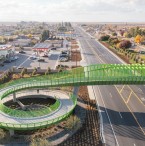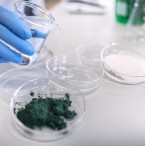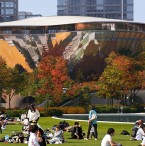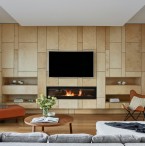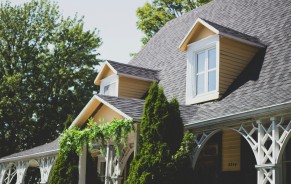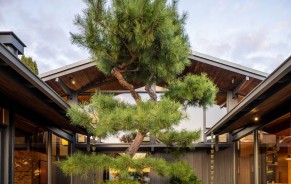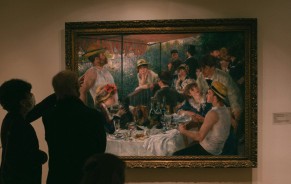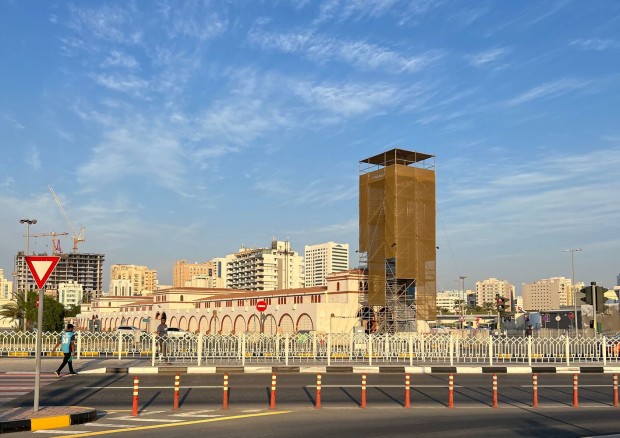
"Time Transitions," a public installation developed for the second edition of the Sharjah Architecture Triennial, emerges as a captivating exploration of impermanence and adaptability in the urban context. Curated by architect Tosin Oshinowo under the theme "Beauty of Impermanence: An Architecture of Adaptability," this 18-meter-high installation by RUÍNA takes center stage at the entrance of the old Al Jubail Vegetable Market in Sharjah, United Arab Emirates. This article delves into the conceptual intricacies, spatial reflections, and sustainable considerations that define "Time Transitions."

A Breath of Fresh Air for Al Jubail Vegetable Market
The old Al Jubail Vegetable Market, a specimen of modern architecture in Sharjah built in 1980, faced impending demolition despite its historical significance. The construction of its successor on the opposite side of the street marked a significant departure in design principles, shifting from passive thermal conditioning to artificial climate control. The resultant spatial transformation triggered reflections on Sharjah's evolving architectural narrative over recent decades.
Also Read: Rome: Unveiling the Crown Jewel of the World's Most Beautiful Cities
"Time Transitions" draws inspiration from ancient wind towers, a vernacular architectural technology designed for cooling buildings. Symbolizing a breath of fresh air for the once-abandoned and now-reoccupied market, the installation stands 18 meters tall, providing a vertical element in a region characterized by lower-rise buildings. This deliberate choice emphasizes the presence of the old market in the urban landscape, bridging the temporal gap between the past and present.

Scaffolding, Demolition Waste, and Archaeological Artifacts
The decision to employ a scaffolding system for "Time Transitions" aligns with sustainability principles, offering quick assembly/disassembly and endless possibilities for reuse post-triennial. This approach avoids the generation of waste commonly associated with major architectural events. Notably, demolition waste blocks find new life as integral components of the installation, serving as counterweights and enhancing the structure's visual impact.
These recycled blocks become illuminated at night, transforming them into provocative archaeological artifacts from a non-linear time. This play with light elevates the discarded materials and challenges perceptions of temporality, inviting viewers to reconsider the potential for regeneration within architectural elements that society often deems obsolete.
A Symbol of Perpetual Construction
"Time Transitions" is partially covered by a shading screen, an intentional design element that signifies an architecture in constant flux and construction. As visitors traverse the installation, the screen overlays the perceived landscape, offering thermal comfort during the day while creating an immersive experience. This dynamic interplay between the installation and its surroundings mirrors the ever-changing urban fabric and invites contemplation on the fluidity of architectural narratives.
Beyond its physical presence, "Time Transitions" prompts profound reflections on impermanence, adaptability, and the potential for regenerative architecture. By drawing attention to the cultural traditions embodied in the old market and advocating for the reintegration of abandoned urban spaces, the installation becomes a catalyst for rethinking architectural epistemologies. RUÍNA envisions alternative futures by recognizing material and immaterial ruins' fundamental role in navigating a dystopian present.
"Time Transitions" transcends its role as a temporary installation for a triennial event, becoming a symbolic marker of Sharjah's architectural evolution. Through its sustainable design, deliberate references to cultural traditions, and thought-provoking juxtaposition of materials, RUÍNA invites viewers to reconsider the narratives embedded in urban spaces. As we explore the impermanence and adaptability inherent in "Time Transitions," we are prompted to envision a regenerative architecture that finds inspiration in the past while charting a course for a more sustainable and culturally rich future.
Related Articles: Architectural Solutions to Save Birds From Glass Collisions and Light Pollution
